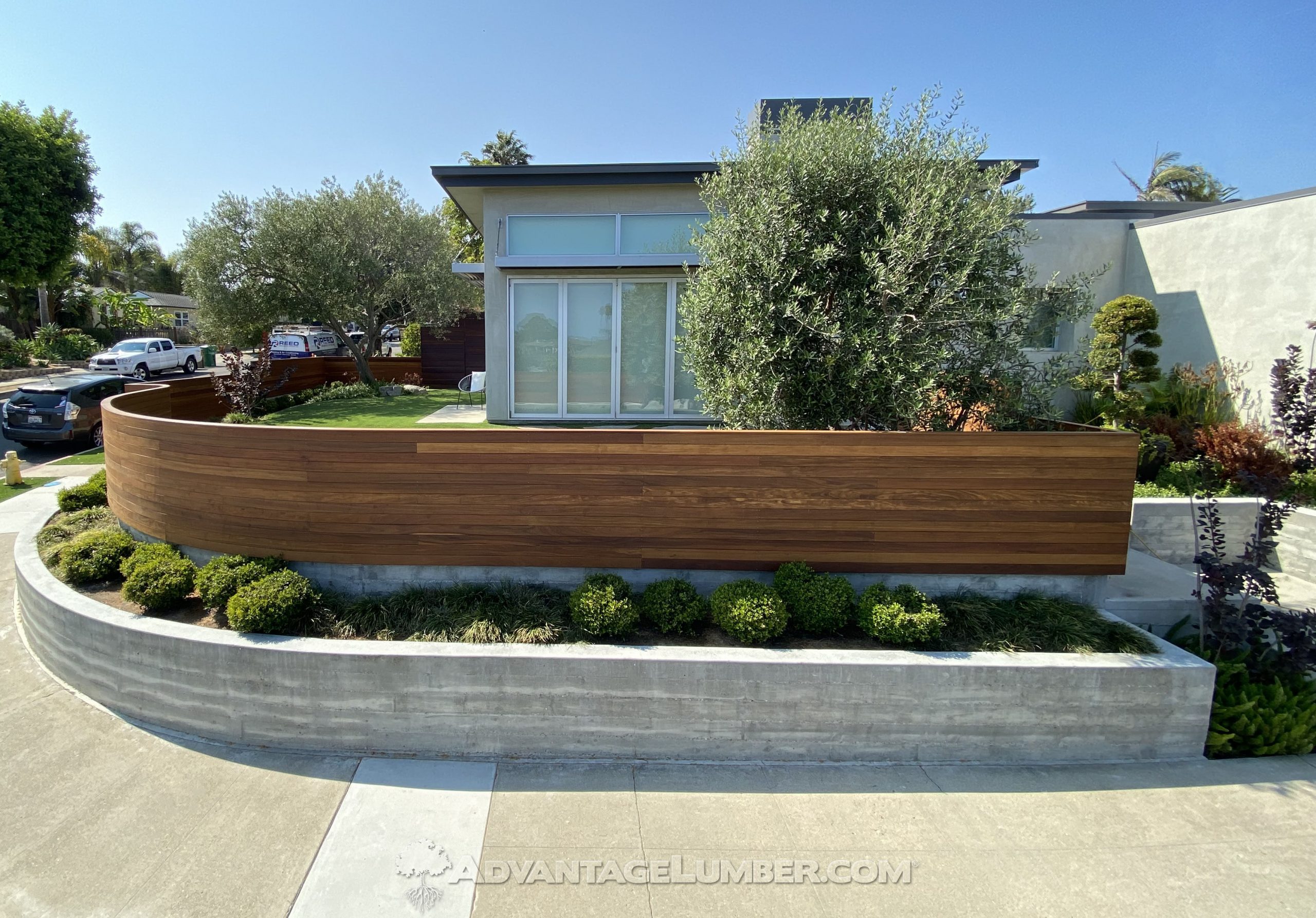When choosing a wood fence, durability, aesthetics, and cost are key considerations. Tropical hardwoods are renowned for their longevity and resistance to harsh weather, insects, and decay.
In this post, we’ll look at the seven most durable wood species—Ipe, Cumaru, Tigerwood, Garapa, Brazilian Redwood, Mahogany, and Teak—detailing their benefits, average price per linear foot, and expected lifespan.
Let’s dive in to find the best wood for your long-lasting fence.
1. Ipe Fencing
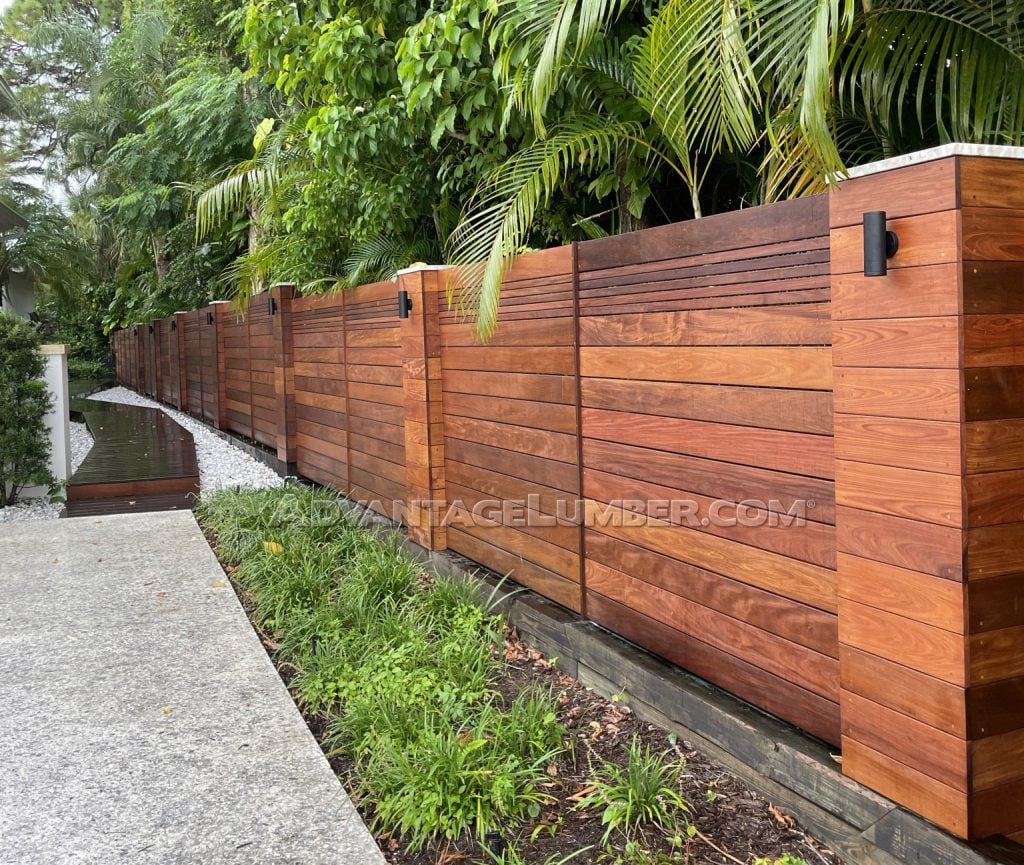
Benefits:
Ipe, often called Brazilian Walnut, is one of the hardest and most durable woods available. Its tight grain and natural oils make it highly resistant to rot, insects, and UV damage. Ipe’s rich, dark brown color adds elegance, and it requires minimal maintenance.
Price: Starting at $4.60 per linear foot
Lifespan: 40–70 years
Ipe is a top choice for homeowners seeking a nearly indestructible fence that retains its beauty for decades.
2. Cumaru Fencing

Benefits:
Cumaru, or Brazilian Teak, boasts exceptional hardness and strength. Its reddish-brown hue deepens with age, and its natural oils protect against moisture, termites, and fungi. Cumaru is low-maintenance and weathers gracefully.
Price: Starting at $3.20 per linear foot
Lifespan: 40–50 years
Cumaru offers a balance of durability and affordability, making it a popular alternative to Ipe.
3. Tigerwood Fencing
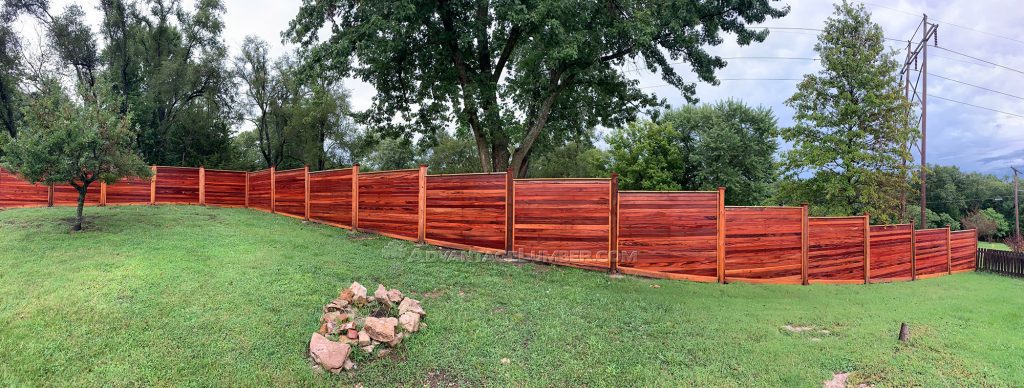
Benefits:
Tigerwood stands out with its striking reddish-orange color and bold, dark stripes. Its dense structure resists rot, insects, and weathering. The wood’s natural oils enhance durability, and its unique grain adds visual flair to any fence.
Price: Starting at $2.17 per linear foot
Lifespan: 25–40 years
Tigerwood is ideal for those wanting a vibrant, long-lasting fence with a distinctive look.
4. Garapa Fencing
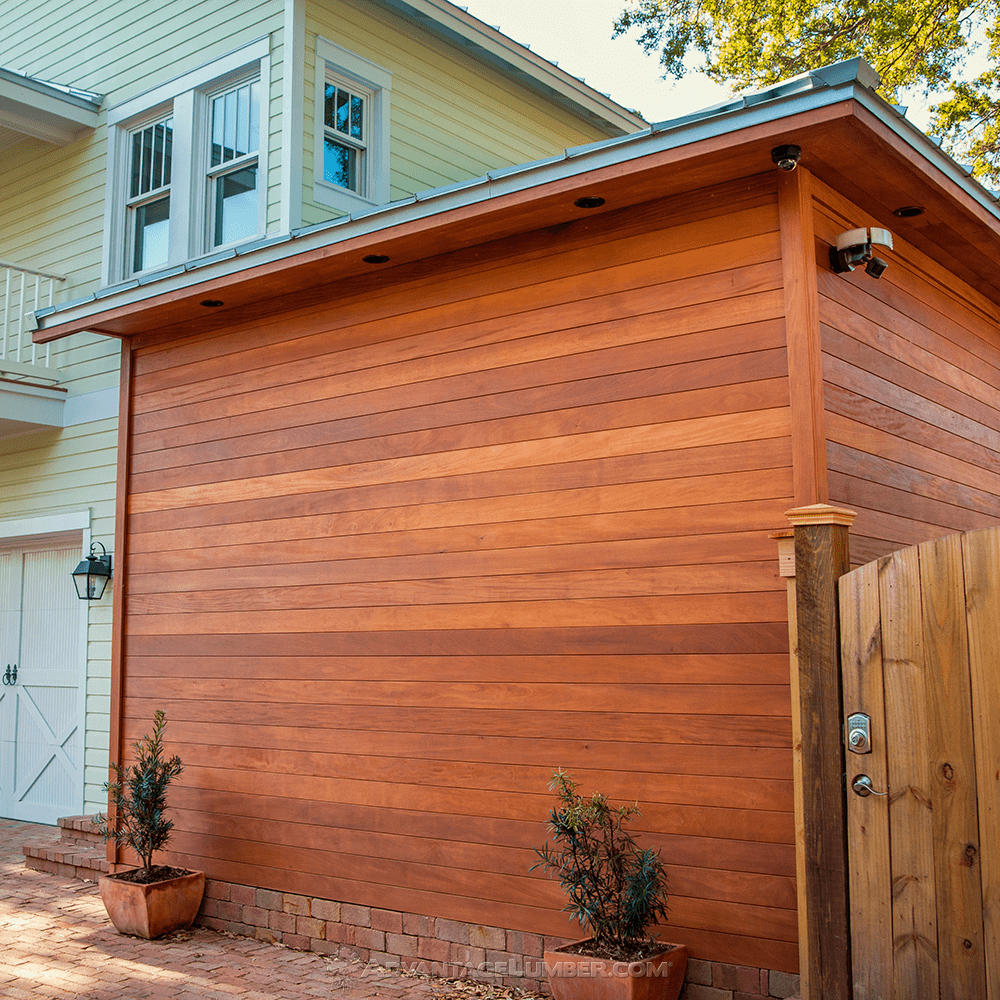
Benefits:
Garapa, or Brazilian Ash, has a warm golden hue that resists fading. Its dense grain provides excellent resistance to moisture, insects, and decay. Garapa is smooth to the touch, splinter-resistant, and easy to maintain.
Price: Starting at $2.44 per linear foot
Lifespan: 30–40 years
Garapa is a cost-effective option for a durable, attractive fence with a lighter aesthetic.
5. Brazilian Redwood Fencing
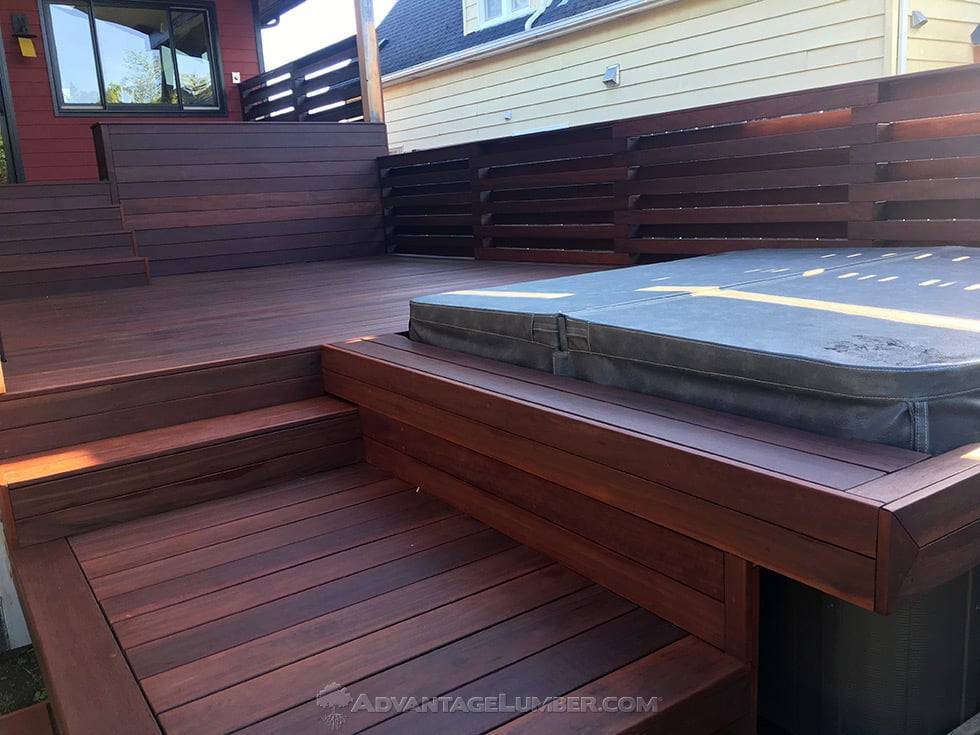
Benefits:
Brazilian Redwood, also known as Massaranduba, is incredibly dense and strong, rivaling Ipe in hardness. Its deep red-brown color is UV-resistant, and it naturally repels water and pests. This wood is highly stable, reducing warping over time.
Price: Starting at $2.44 per linear foot
Lifespan: 30–50 years
Brazilian Redwood is a robust choice for a fence that combines longevity with rich color.
6. Mahogany Fencing
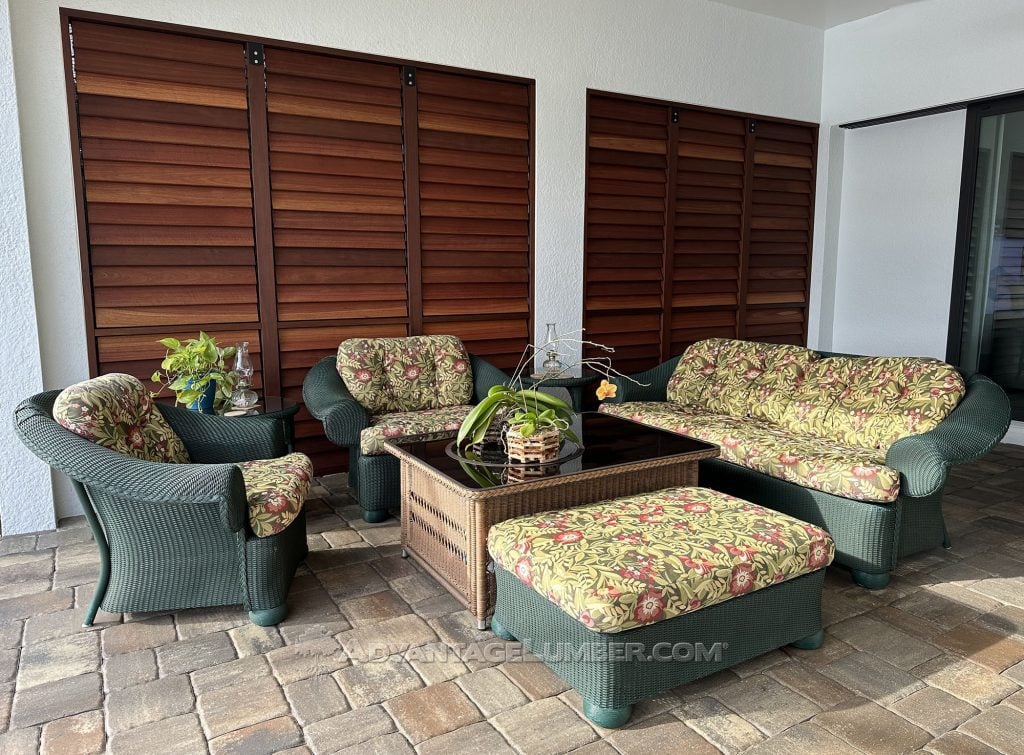
Benefits:
Mahogany offers a classic, reddish-brown appearance that ages to a silvery patina if untreated. Its moderate density provides good resistance to rot and insects, though it benefits from regular sealing. Mahogany’s smooth texture and workability make it a favorite for custom fences.
Price: Starting at $1.95 per linear foot
Lifespan: 20–30 years
Mahogany is perfect for those prioritizing elegance and willing to invest in periodic maintenance.
7. Teak Fencing
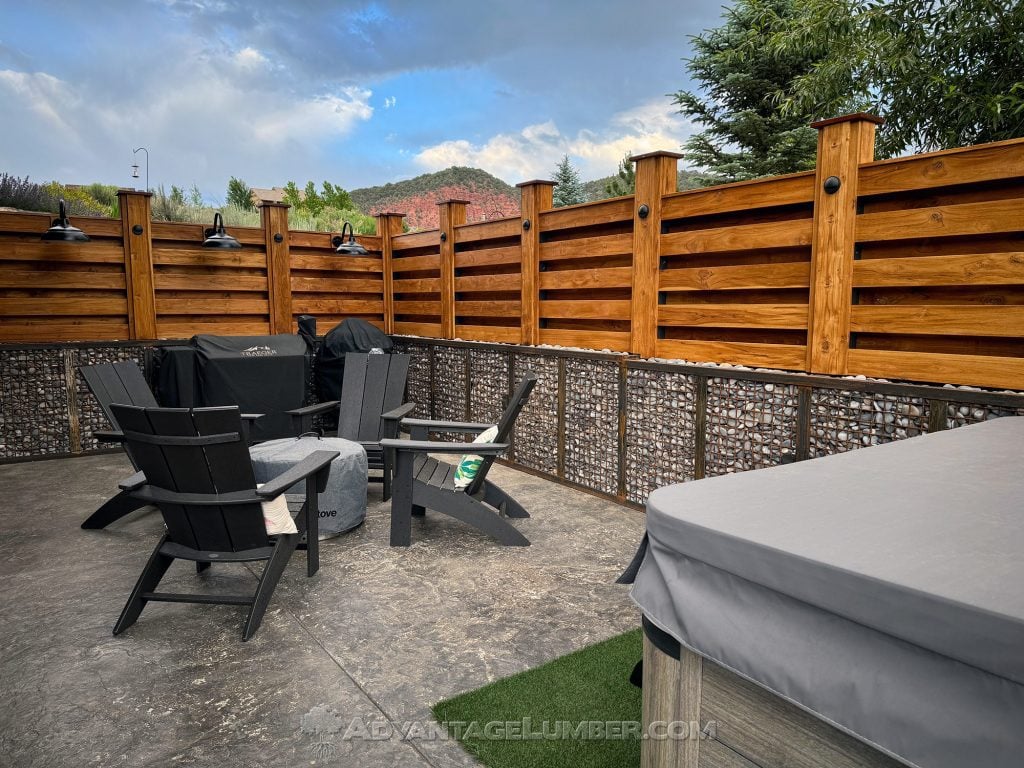
Benefits:
Teak is renowned for its golden-brown color and exceptional weather resistance. Its high oil content protects against moisture, insects, and cracking, even in extreme climates. Teak develops a silver-gray patina over time, adding character.
Price: Starting at $2.27 per linear foot
Lifespan: 30–40 years
Teak’s premium price reflects its unmatched durability and low-maintenance appeal.
Comparing the Options
- Longest-Lasting: Ipe (40–70 years) and Cumaru (40–50 years) top the list due to their extreme density and natural oils.
- Most Affordable: Mahogany, Teak and Tigerwood offer durability at a lower cost.
- Best Aesthetics: Tigerwood’s bold stripes and Mahogany’s classic richness stand out for visual impact.
- Low Maintenance: Ipe, Cumaru, and Teak require the least upkeep due to their inherent resistance to environmental damage.
Factors Affecting Longevity
To maximize your fence’s lifespan, consider:
- Installation: Proper post setting and drainage prevent premature rot.
- Maintenance: Periodic cleaning and oiling to extend your fence’s lifespan.
- Installation: Proper post setting and drainage prevent premature rot.
- Climate: Harsh sun, rain, or humidity can affect lifespan; tropical hardwoods excel in extreme conditions from hot and humid, snowy and cold to dry desert conditions.
Conclusion
For the longest-lasting wood fence, Ipe and Cumaru are unbeatable, offering up to 70 and 50 years of service, respectively. If budget is a concern, Teak, Garapa or Tigerwood provide excellent durability at a lower price point. Each species brings unique benefits, from Tigerwood’s vibrant patterns to Mahogany’s timeless elegance. Evaluate your aesthetic preferences, maintenance commitment, and budget to choose the perfect wood for your fence.
Investing in a high-quality tropical hardwood ensures a fence that not only lasts but also enhances your property’s value and curb appeal for decades. Ready to build? Consult a local supplier for current pricing and availability in your area.
Note: Prices are approximate and based on Q1 2025 market trends for imported hardwoods. Costs may vary by region, and fence design.
